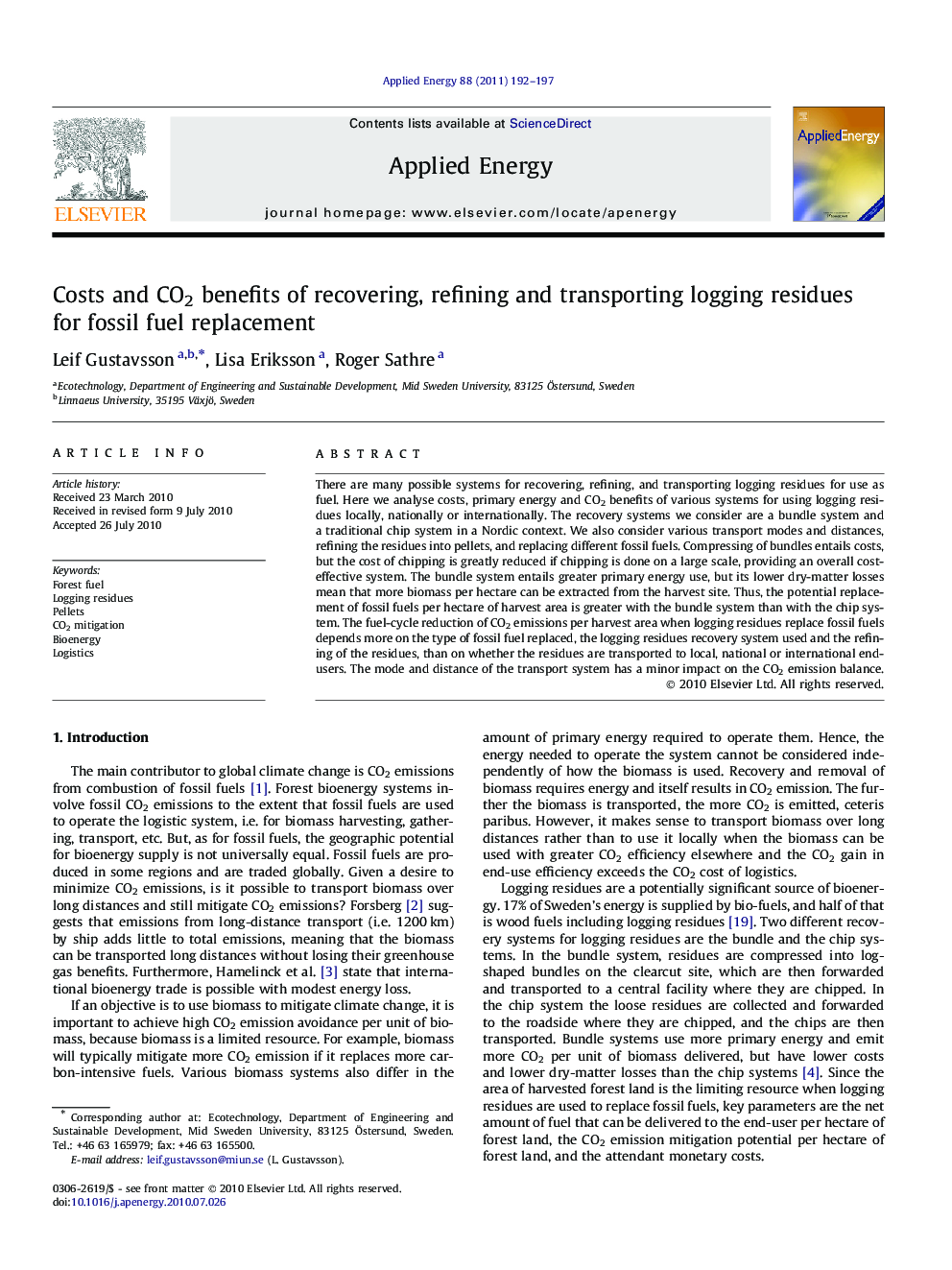| Article ID | Journal | Published Year | Pages | File Type |
|---|---|---|---|---|
| 244429 | Applied Energy | 2011 | 6 Pages |
There are many possible systems for recovering, refining, and transporting logging residues for use as fuel. Here we analyse costs, primary energy and CO2 benefits of various systems for using logging residues locally, nationally or internationally. The recovery systems we consider are a bundle system and a traditional chip system in a Nordic context. We also consider various transport modes and distances, refining the residues into pellets, and replacing different fossil fuels. Compressing of bundles entails costs, but the cost of chipping is greatly reduced if chipping is done on a large scale, providing an overall cost-effective system. The bundle system entails greater primary energy use, but its lower dry-matter losses mean that more biomass per hectare can be extracted from the harvest site. Thus, the potential replacement of fossil fuels per hectare of harvest area is greater with the bundle system than with the chip system. The fuel-cycle reduction of CO2 emissions per harvest area when logging residues replace fossil fuels depends more on the type of fossil fuel replaced, the logging residues recovery system used and the refining of the residues, than on whether the residues are transported to local, national or international end-users. The mode and distance of the transport system has a minor impact on the CO2 emission balance.
